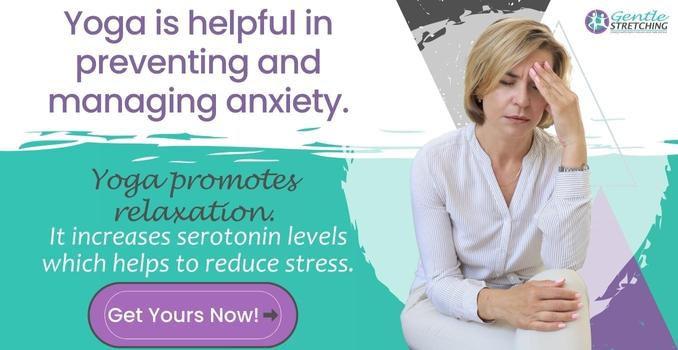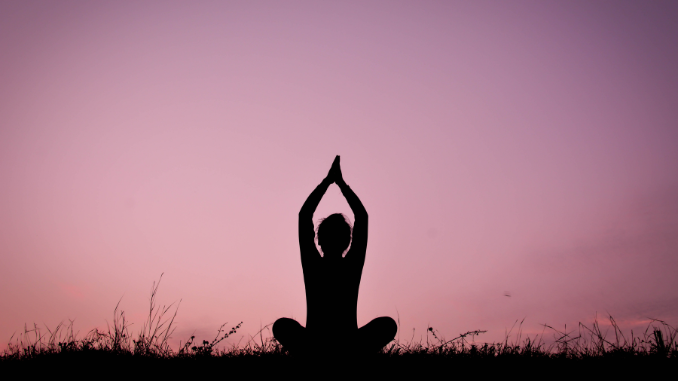
Master Your Practice: Top Yoga Flow Sequence For Daily Inspiration
Unlock the potential of your yoga practice with our curated “yoga flow sequence”. Whether it’s strength, flexibility, or mindfulness you seek, find the yoga flow sequence that speaks to you. This is no fluff, just the meaningful guidance you need to refine your movements and breathe with purpose.
The Power Of Vinyasa Yoga
-
Vinyasa Yoga flow sequence
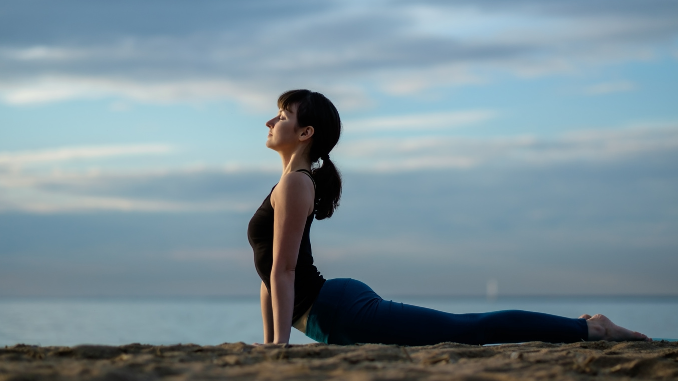
Vinyasa yoga is a fluid practice incorporating elements of Hatha, Ashtanga, and Viniyoga, with a pronounced focus on synchronizing breath and movement. This synchronization, or “flow,” is a fundamental element of Vinyasa. It is a transforming series of yoga poses into a seamless vinyasa flow sequence that rejuvenates mind and body.
Moreover, it’s not just about the poses. It’s about how you transition from one pose to the next, guided by your breath. So, joining a vinyasa yoga class can help you experience this unique vinyasa flow.
This dynamic practice targets specific body areas while connecting the mind and body through breath and self-energy. Vinyasa yoga doesn’t exclusively involve fast-paced movements in contrast with the common perceptions. Instead, it is adaptable to reflect practitioners’ energy levels, which can be more subdued, particularly in the morning.
The adaptability of Vinyasa yoga, coupled with the therapeutic benefits that transcend physical health, contributes to holistic well-being. In this context, incorporating yin yoga practices can provide a complementary balance to the dynamic nature of Vinyasa yoga.
-
Origins Of Vinyasa Yoga
Vinyasa yoga can trace its origins back to the teachings of the revered Krishnamacharya, who laid the foundation for the modern vinyasa sequence.
Also, Krishnamacharya’s teachings emphasized the importance of breath-synchronized movement, transforming the practice of yoga into a dynamic, flowing journey.
Unlike Hatha yoga, which focuses on holding postures for prolonged periods, Vinyasa yoga maintains each pose for only one breath, moving swiftly and smoothly from one pose to the next.
The emphasis on transitions, harmonized with the rhythm of the breath, imparts Vinyasa yoga with its characteristic flow, offering a dynamic and fluid practice that simultaneously challenges and nurtures the body and mind.
-
Key Components Of Vinyasa Yoga
Breath-synchronized movement is a fundamental component of Vinyasa yoga. By linking breath with movement, Vinyasa yoga improves respiratory health, calms the mind, and enhances focus. This connection between breath and movement is the cornerstone of a Vinyasa practice, setting it apart from other forms of yoga.
Another key component of Vinyasa yoga emphasizes smooth transitions between poses. Yoga teachers often help students navigate common transitions like moving from Cobra to Upward Facing Dog or Plank Pose to Downward Facing Dog.
When executed with mindful breathing and proper alignment, these transitions ensure a smooth flow of energy in the body, enhancing both the physical and mental benefits of the practice.
Building Your Personalized Yoga Flow Sequence
A. Setting An Intention For Yoga Practice
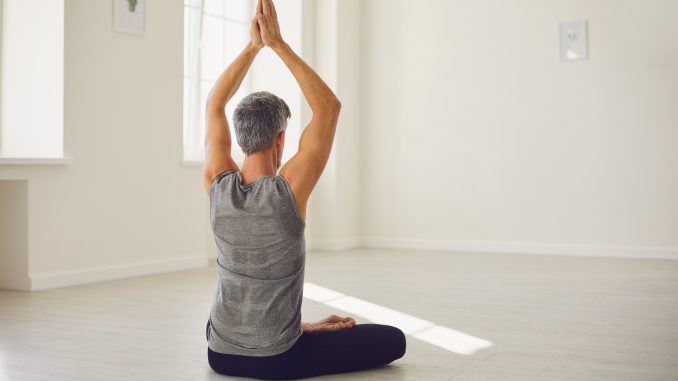
Crafting a personalized yoga flow sequence involves the following steps:
- Set an intention for your practice.
- Select and sequence poses that align with your intention and address your physical needs.
- Make adjustments to accommodate your unique body and fitness level.
- Practice the sequence, focusing on the connection between movement and breath.
- Then, Reflect on how the sequence resonates with your emotional and spiritual aspirations.
You can create a yoga practice that aligns with your specific needs and objectives by following these steps.
The allure of a personalized yoga flow sequence lies in the ownership and autonomy it grants over your practice. It allows you to cater to your specific needs and preferences, amplifying the benefits of your practice and making it a truly personal experience.
Whether you aim to:
- Build Strength
- Enhance Flexibility
- Manage Stress
- Cultivate a Moment of Peace in your Busy Day
A personalized core yoga sequence, including vinyasa flow sequences, can be a valuable asset in your wellness arsenal, especially when exploring various yoga sequences..
B. Setting An Intention
Every great journey begins with an intention; your yoga journey is no exception. Setting an intention for your practice is like planting a seed. It gives your practice a purpose and a direction, guiding your focus and energy throughout the sequence.
Your intention might be anything that resonates strongly with you. You may wish to cultivate a sense of peace amidst the chaos of daily life, or you may aim to build physical strength or flexibility. Whatever your intention, hold it in your heart as you move through your practice, allowing it to inspire and guide you in every pose.
With time, you’ll notice this intention permeating other facets of your life, altering your yoga practice and your comprehensive life approach.
C. Balancing Poses And Transitions
In Vinyasa yoga, the journey carries equal significance as the destination. This is where balancing poses and transitions come into play. Balancing poses enhance coordination, concentration, and muscle strength, particularly in the legs and core. Moreover, they cultivate mental and emotional resilience, empowering you to stay calm and centered amidst challenges.

Transitions, on the other hand, connect the poses and provide a rhythm to your practice. In Vinyasa yoga, every movement is linked to an inhale or an exhale, creating a seamless flow of energy throughout the body.
Whether moving from Downward Facing Dog to Warrior I or Child’s Pose to Cobra, mindful transitions can make your practice feel like a graceful dance, enhancing your strength, control, and mindfulness on the mat.
D. Adjusting The Sequence for Different Levels
Yoga welcomes participants of various skill levels, fostering inclusivity within its practice. Adjusting your sequence for different levels ensures everyone - from beginners to advanced practitioners - can benefit from the practice. This is particularly important in a yoga class, where the dynamic nature of the Vinyasa class can sometimes be challenging for beginners.
For beginners, it’s crucial to gradually introduce challenging poses, including seated poses, and focus on the basic form of the pose. For intermediate practitioners, modifications can be introduced to standing poses, such as the standing forward bend, to include more balancing and twisting movements.
Advanced practitioners, on the other hand, can explore creative transitions, focus on peak poses, and experiment with unique pose variations.
Irrespective of your skill level, remember that yoga represents a journey rather than a destination. Celebrate your progress, have patience with your challenges, and most importantly, enjoy the practice.
Sample Yoga Flow Sequences
Here are three sample sequences designed for different needs and times of the day to give you a taste of what a personalized yoga flow sequence might look like. Whether you’re looking for an energizing start to the day, a calming end to the evening, or a mid-day core workout, these sequences have got you covered.
Keep in mind that these are mere examples. You’re encouraged to modify them according to your needs, add or omit poses, or even concoct your sequences from scratch. The sky is the limit when it comes to personalizing your yoga practice!
1. Energizing Morning Flow

The “Energizing Morning Flow” sequence, including a hip opening sequence, is your perfect morning pick-me-up. It's designed to awaken and energize the body and mind. This sequence sets a dynamic tone for the day, incorporating movements designed to enhance vitality and focus.
Start with a few rounds of Sun Salutations as your body warm-up, followed by a series of standing poses to build strength and stability.
Finish with a gentle cool-down sequence and a few minutes of quiet meditation to anchor the mind and set a positive tone for the rest of the day.
By the end of the sequence, you’ll feel invigorated, focused, and ready to take on the day.
2. Stress-Relief Evening Flow
After a long, stressful day, nothing beats the “Stress-Relief Evening Flow” to help you unwind and prepare for a good night’s sleep.
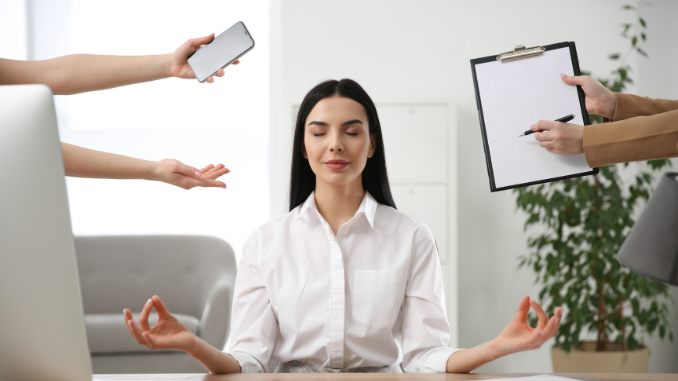
This sequence is designed to:
- Release tension from the body
- Calm the mind
- Promote deep relaxation
- Facilitate restful sleep
Start with gentle stretches to release tension from the shoulders and hips, followed by restorative poses to calm the nervous system. You might also include a few yin poses, held for longer periods, to target the deep connective tissues and further promote relaxation.
Finish with a guided relaxation or meditation to quiet the mind and ease into a peaceful night’s sleep.
2. Core-Strengthening Flow
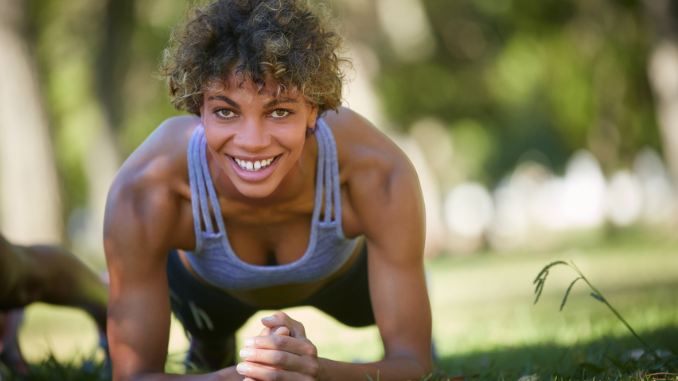
The “Core-Strengthening Flow” is your perfect match if you want to build strength and stability. This sequence targets the core muscles, enhancing stability, improving posture, and boosting overall fitness.
- Plank,
- Side Plank, and
- Boat Pose.
Be sure to engage the core throughout the sequence, drawing the navel towards the spine to stabilize the body.
Finish with a cool-down sequence and a few minutes of relaxation to allow the body to absorb the benefits of the practice.
Tips For Enhancing Your Vinyasa Practice
-
Mindful Breathing In Yoga

While creating your personalized Yoga flow sequence is a big step towards a fulfilling Vinyasa practice, you can incorporate a few more tips to enhance your experience further. These include focusing on proper alignment and technique, mindful breathing, and embracing progress and patience in your practice.
Remember, yoga isn’t simply a physical practice; it constitutes a holistic journey encompassing the mind, body, and spirit.
Integrating these tips into your practice can deepen your connection with yourself, enhance your physical fitness, and cultivate a sense of peace and well-being that extends beyond the mat.
-
Proper Alignment And Technique
Proper alignment and technique are paramount in any yoga practice, including Vinyasa. Correct alignment not only enhances the benefits of the poses but also minimizes the risk of injury. This is where the guidance of a yoga teacher can be particularly beneficial.
Whether practicing in a studio or at home, take the time to learn the basics of each pose.
Here are some tips to keep in mind:
- Pay attention to the foundation of each pose
- Engage the appropriate muscle groups
- Always prioritize alignment over depth'
- Remember, it’s not about how the pose looks on the outside but how it feels on the inside
With time and practice, you’ll find that proper alignment becomes second nature, enhancing your practice's physical and mental benefits.
-
Mindful Breathing
Breathing is the vital force powering our Yoga flow sequence practice, with mindful breathing forming a fundamental aspect of Vinyasa yoga. By linking each movement with an inhale or an exhale, mindful breathing provides a rhythm for your practice and connects the mind and body, promoting a state of mindfulness and relaxation.
Whether you’re a beginner or a seasoned yogi, incorporating mindful breathing into your practice can transform your experience.
Try to maintain a consistent rhythm of breath throughout the practice, inhaling and exhaling smoothly and evenly. With each inhale, invite fresh energy into the body, and exhale, release tension and stress.
With practice, you’ll find that mindful breathing enhances your yoga practice and assists you in maneuvering through the ups and downs of daily life with enhanced ease and resilience.
-
Embracing Progress And Patience
Lastly, welcome progress and exercise patience throughout your yoga journey. Yoga represents an ongoing journey of self-discovery and personal growth rather than a fixed destination. Recognizing that progress takes time and patience can foster a sense of self-compassion and acceptance, both on and off the mat.
Celebrate your victories, no matter how small, and treat challenges as opportunities for growth. Be patient with yourself, knowing that each practice brings you closer to your goals.
Above all, ensure to cherish the journey. After all, the joy of yoga comes not from perfecting the poses but from the journey of self-exploration and growth that it offers.
Incorporating Props And Modifications
1. Yoga Props And Modifications
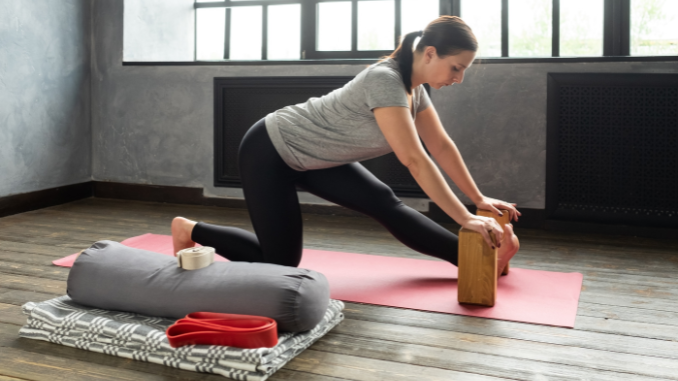
Props and modifications are potent tools to render your yoga practice more accessible, comfortable, and individualized. From blocks and straps to bolsters and cushions, these tools can help you adjust the poses to suit your unique body and needs, enhancing the benefits of your practice and making Yoga flow sequence more inclusive for all.
Bear in mind that employing props doesn’t denote weakness or limitation. On the contrary, it’s a sign of wisdom and self-awareness.
By adjusting the poses to suit your body, you’re honoring your body’s unique needs and capabilities, fostering a sense of self-acceptance and body positivity at the heart of yoga.
2. Blocks
Due to their versatility, yoga blocks can offer support and stability across numerous poses.
Whether working on balance poses or trying to deepen a forward bend, a block can provide the extra height or support you need to practice safely and comfortably.
Yoga blocks come in different materials and sizes to suit different needs and preferences. Whether you prefer the sturdy feel of a wooden block or the lightness and portability of a foam block, there’s a block out there for everyone. Experiment with different types and see what works best for you.
3. Straps
Yoga straps, another flexible prop, can aid in extending your reach and intensifying your stretch.
Particularly useful in poses where the hands or feet are difficult to grasp, a strap can help you maintain proper alignment and technique while working on flexibility and range of motion.
Like blocks, straps come in different lengths to suit different needs and body types. Whether you’re working on hamstring stretches, shoulder openers, or seated forward folds, a strap can be a valuable tool in your yoga toolbox.
4. Bolsters And Cushions
Lastly, bolsters and cushions can furnish comfort and support in seated and reclined poses, facilitating profound relaxation and restoration. Whether practicing a restorative Yoga flow sequence or simply sitting for meditation, a bolster or cushion can make your practice more comfortable and enjoyable.
Bolsters and cushions come in different sizes and shapes to suit different poses and body types. Experiment with different types and see what works best for you.
Remember, the goal is not to achieve a picture-perfect pose but to practice in a way that feels good for your body and mind.
Frequently Asked Questions
-
What Are The 5 Sequences Of A Yoga Class?
The 5 sequences of a yoga class are opening, warm-up, standing poses, peak poses, floor poses, and final relaxation, or Savasana. These sequences create a structured and balanced yoga practice.
-
How Do You Sequence A Yoga Flow?
When sequencing a yoga flow, start with a warm-up, move to a hot part, and finish with a cool-down. Consider the needs of your students, include poses on both sides and plan for at least one minute of Savasana for every 10 minutes of practice. Aim to build to a peak during the sequence.
-
In What Order Should You Do Yoga Poses?
It would help if you started with gentle stretching and then moved to standing postures or sun salutations to warm up. Once fully warm, proceed to deeper poses like backbends and hamstring stretches, and conclude with relaxing poses before savasana.
-
What Is The Significance Of Setting An Intention In Your Yoga Practice?
Setting an intention in your yoga practice can provide a purpose and guide your focus during the sequence, enhancing the overall experience.
-
How Do Blocks And Straps Enhance A Yoga Practice?
Using blocks and straps in yoga can offer support and stability in different poses, making them more accessible for practitioners of various body types and skill levels. This can help enhance the overall yoga practice.
Summary
Vinyasa yoga is a dynamic, adaptable practice that combines breath-synchronized movement with mindfulness and focus. Whether you’re a seasoned yogi or a beginner, creating a personalized yoga flow sequence can empower you to take charge of your practice, making it a truly personal and transformative journey.
By incorporating proper alignment, mindful breathing, and props and modifications into your practice, you can enhance your Vinyasa experience and reap the numerous physical, mental, and spiritual benefits this practice offers.
Remember, yoga is not a destination but a lifelong journey of self-discovery and growth. So roll out your mat, breathe, and embrace the journey.
Relax and free yourself from anxiety and start living a life full of gratitude! So, make the Yoga to Calm Anxiety program a part of your daily routine!

